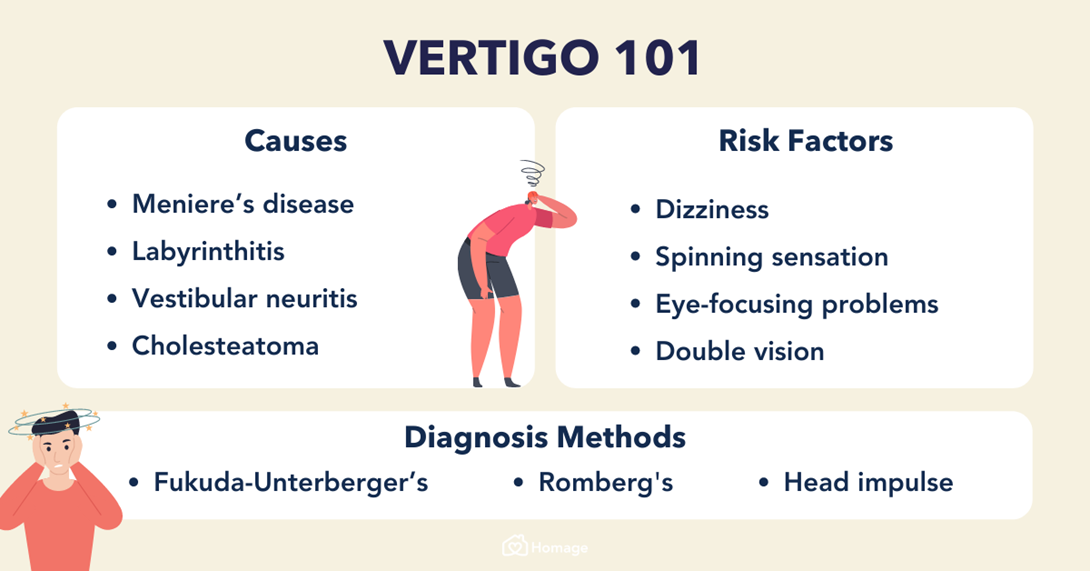A patient experiences residual effects following an acute attack of Ménière's disease and receives a new prescription for an antihistamine. Which assessment finding indicates that the medication is effective?
Headache rated at 0 on 0 to 10 scale.
Oxygen saturation level of 99%.
Ambulates easily without vertigo.
Blood pressure of 120/80 mm Hg.
The Correct Answer is C
Choice A: A headache rated at 0 on 0 to 10 scale is not a specific indicator of the effectiveness of an antihistamine. A headache may be caused by other factors, such as dehydration, stress, or sinus congestion.
Choice B: Oxygen saturation level of 99% is a normal finding and does not reflect the effect of an antihistamine. Oxygen saturation measures the amount of oxygen in the blood and can be affected by respiratory conditions, altitude, or smoking.
Choice C: Ambulating easily without vertigo is a sign that the antihistamine is effective. Vertigo is a common symptom of Ménière's disease, which is a disorder of the inner ear that causes episodes of spinning sensation, hearing loss, and tinnitus. Antihistamines can help reduce the fluid buildup in the inner ear and relieve vertigo.
Choice D: Blood pressure of 120/80 mm Hg is a normal finding and does not indicate the effect of an antihistamine. Blood pressure measures the force of blood against the walls of the arteries and can be influenced by factors such as heart rate, cardiac output, blood volume, and vascular resistance.

Nursing Test Bank
Naxlex Comprehensive Predictor Exams
Related Questions
Correct Answer is C
Explanation
Choice A reason: A referral for social services at home is not necessary for a client with Addison's disease who has stable vital signs, adequate hydration, and good self-care knowledge.
Choice B reason: Limiting daily fluid intake to 500 mL is not appropriate for a client with Addison's disease, who is at risk of dehydration and hypotension. The client should drink fluids according to thirst and urine output.
Choice C reason: Preparing the client for discharge home is the best action for the nurse to implement, as the client has no signs of complications or deterioration from Addison's disease. The client should be able to manage the condition at home with regular follow-up and medication adherence.
Choice D reason: Strict intake and output monitoring is not required for a client with Addison's disease who has normal blood pressure, moist mucous membranes, and strong peripheral pulses. These indicate adequate fluid balance and renal function.
Correct Answer is C
Explanation
Choice A reason: Redness and edema noted at the incision site are signs of inflammation, which are normal in the early stages of wound healing. The nurse should monitor the site for signs of infection, such as purulent drainage, increased pain, or fever.
Choice B reason: Apical heart rate of 100 to 110 beats/minute is a sign of tachycardia, which may be caused by pain, anxiety, dehydration, or blood loss. The nurse should assess the client's vital signs, fluid status, and hemoglobin level, and administer pain medication as prescribed.
Choice C reason: High-pitched sound heard upon inspiration is a sign of stridor, which is a life-threatening emergency that indicates airway obstruction. The nurse should call for help, administer oxygen, and prepare for intubation or tracheostomy.
Choice D reason: Pain rating of 8 on a scale of 0 to 10 is a sign of severe pain, which may impair the client's recovery and increase the risk of complications. The nurse should administer pain medication as prescribed and use non-pharmacological methods to relieve pain, such as positioning, distraction, or relaxation techniques.
Whether you are a student looking to ace your exams or a practicing nurse seeking to enhance your expertise , our nursing education contents will empower you with the confidence and competence to make a difference in the lives of patients and become a respected leader in the healthcare field.
Visit Naxlex, invest in your future and unlock endless possibilities with our unparalleled nursing education contents today
Report Wrong Answer on the Current Question
Do you disagree with the answer? If yes, what is your expected answer? Explain.
Kindly be descriptive with the issue you are facing.
